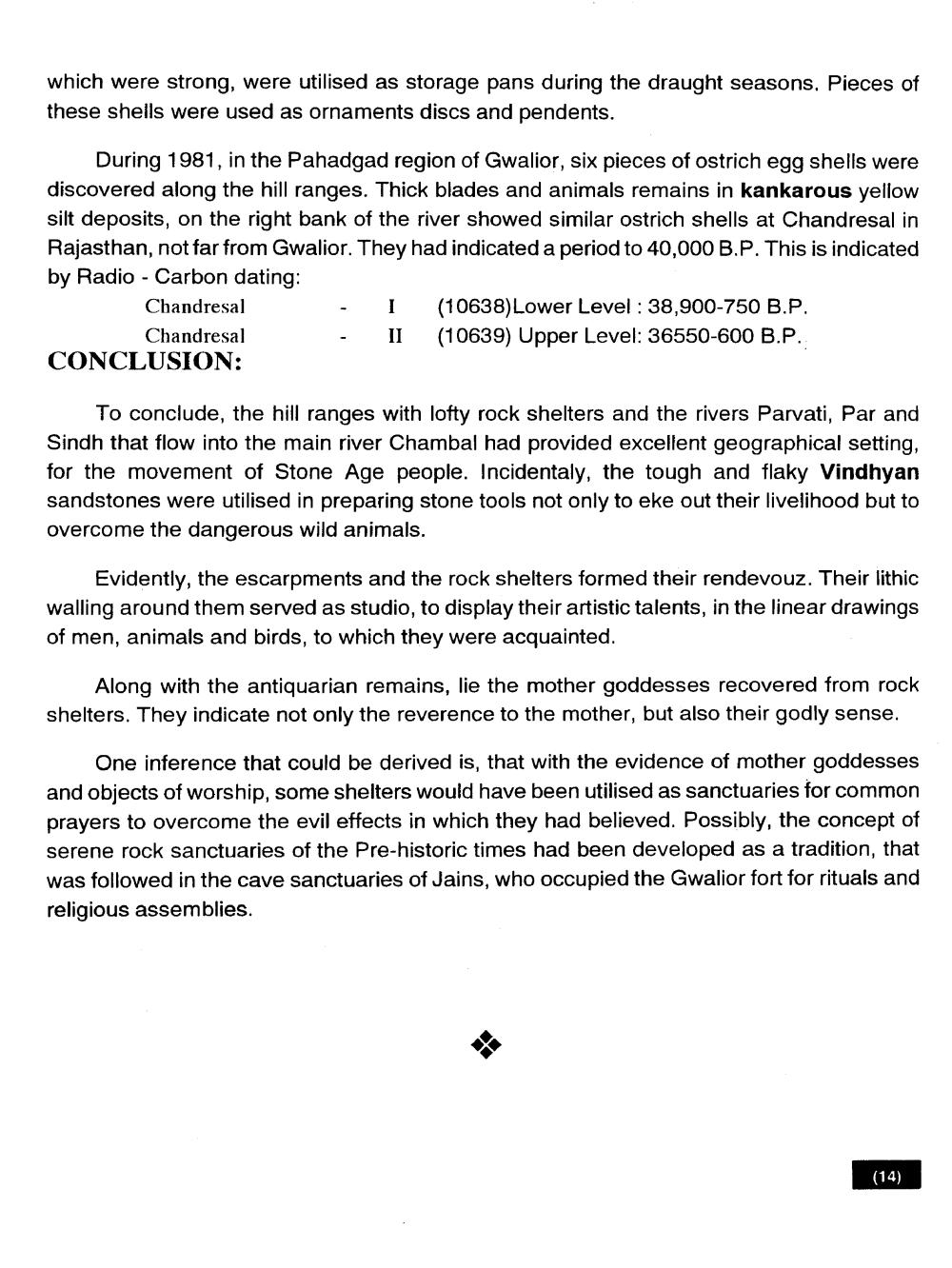________________
which were strong, were utilised as storage pans during the draught seasons. Pieces of these shells were used as ornaments discs and pendents.
During 1981, in the Pahadgad region of Gwalior, six pieces of ostrich egg shells were discovered along the hill ranges. Thick blades and animals remains in kankarous yellow silt deposits, on the right bank of the river showed similar ostrich shells at Chandresal in Rajasthan, not far from Gwalior. They had indicated a period to 40,000 B.P. This is indicated by Radio Carbon dating:
Chandresal
Chandresal
CONCLUSION:
I
II
(10638) Lower Level: 38,900-750 B.P. (10639) Upper Level: 36550-600 B.P.
To conclude, the hill ranges with lofty rock shelters and the rivers Parvati, Par and Sindh that flow into the main river Chambal had provided excellent geographical setting, for the movement of Stone Age people. Incidentaly, the tough and flaky Vindhyan sandstones were utilised in preparing stone tools not only to eke out their livelihood but to overcome the dangerous wild animals.
Evidently, the escarpments and the rock shelters formed their rendevouz. Their lithic walling around them served as studio, to display their artistic talents, in the linear drawings of men, animals and birds, to which they were acquainted.
Along with the antiquarian remains, lie the mother goddesses recovered from rock shelters. They indicate not only the reverence to the mother, but also their godly sense.
One inference that could be derived is, that with the evidence of mother goddesses and objects of worship, some shelters would have been utilised as sanctuaries for common prayers to overcome the evil effects in which they had believed. Possibly, the concept of serene rock sanctuaries of the Pre-historic times had been developed as a tradition, that was followed in the cave sanctuaries of Jains, who occupied the Gwalior fort for rituals and religious assemblies.
(14)




